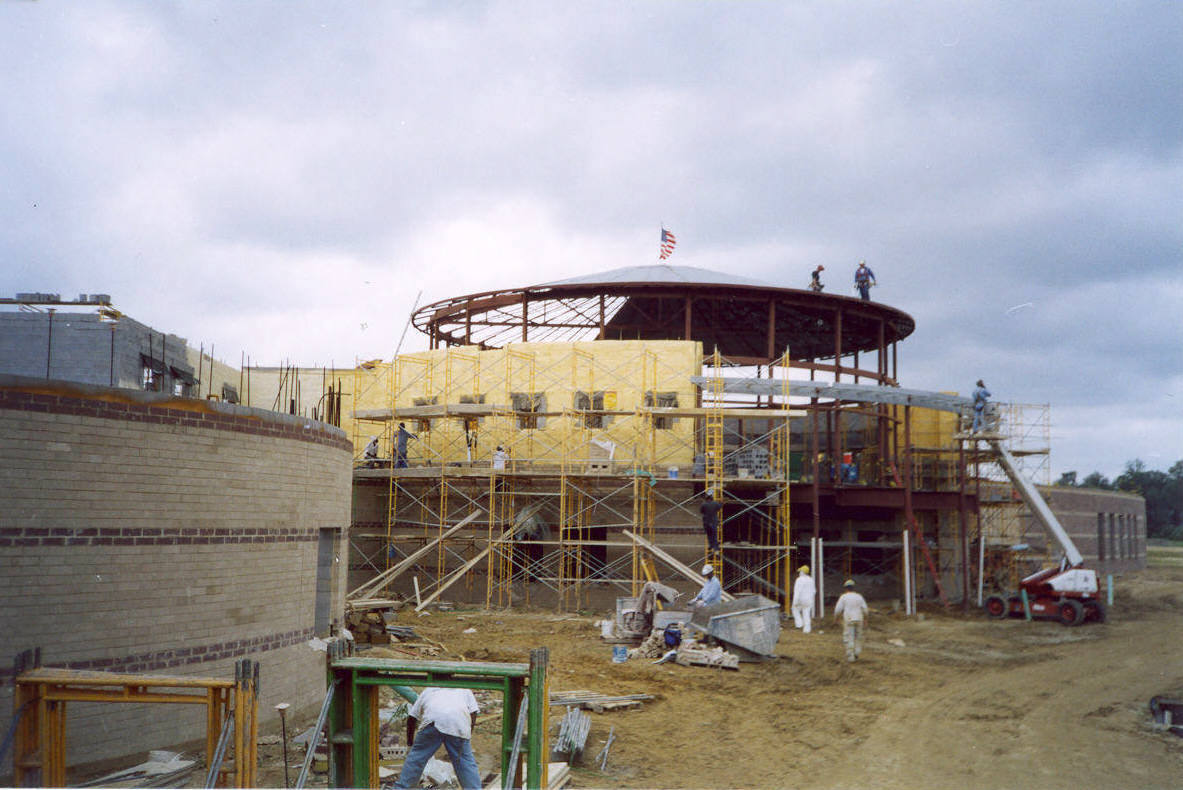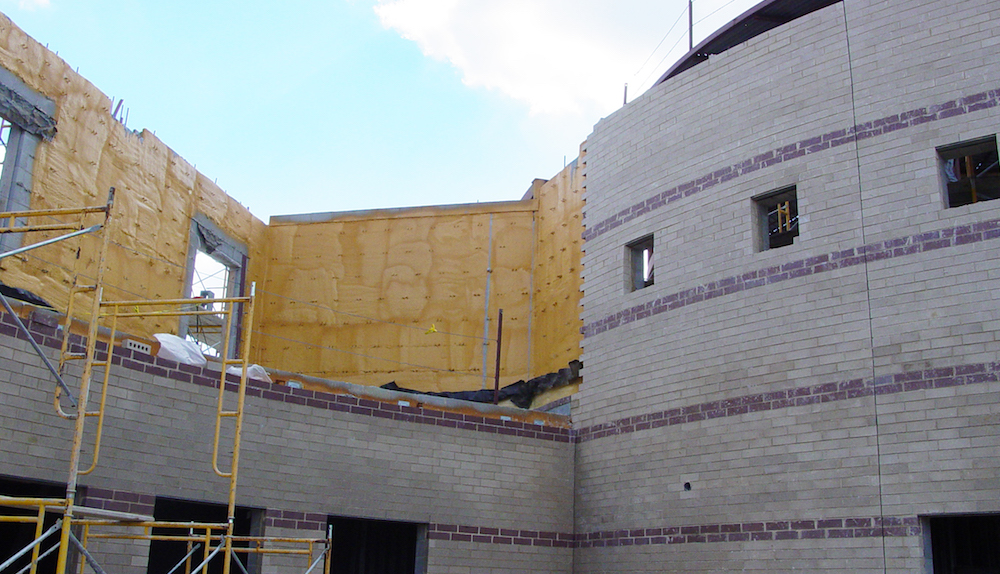Duane Harver, the lead architect behind the innovative King’s Fork High School in the City of Suffolk, Va., had a problem. His design concept sought to create an optimal learning environment for teachers and students, and was drawing rave reviews for how it capitalized on the most modern, advanced research into educational ecology.
Harver’s design made extensive use of curved exterior walls, which meant that conventional rigid, flat insulation systems simply wouldn’t work. Building an uninsulated school was obviously not an option, and nobody wanted to abandon such a superb concept.
The project turned to Ayers Insulation, a Virginia Beach-based contractor, for a solution. Ayers recommended the use of a spray polyurethane foam (SPF) insulation called InsulBloc by US company, NCFI. InsulBloc, developed expressly for masonry cavity wall insulation and damp-proofing applications, is a high-performance, high-density closed-cell system that provides a highly efficient air barrier and vapor diffusion retarder. InsulBloc assures higher actual R-values per unit thickness than can be achieved with any other type of commercially available insulation. Plus, since the SPF is spray applied as a liquid, it conforms to any design shape, filling every crack and crevice, before it expands then cures in place.
This product not only assured the success of the King’s Fork project – it also frees architects, contractors and specifiers everywhere from restrictive concerns about innovation and shape in their designs.

Thanks to NCFI, the King’s Fork High School project was a success on many fronts: Suffolk Public Schools and its students are now learning in an outstanding new facility; the National School Boards Association and Virginia School Boards Association both recognized the project, with one awarding body calling it “an educational and architectural model for high schools of the future.” Ayers Insulation earned a prestigious national award for the project when the Spray Polyurethane Foam Alliance (SPFA) awarded Ayers second place for Best Commercial Insulation Application at its Annual Industry Contractor Awards national convention in Tucson, Ariz.
Frank Hughes, who managed the InsulBloc application on the King’s Fork project, was gratified by the recognition. “The new King’s Fork High School isn’t just a beautiful facility, it’s an important one. We’re honored we were able to help the school system and architects find a solution to a critical challenge. InsulBloc was ideally suited to this task, and we’re finding that more and more people are beginning to understand the benefits of spray foam insulation technology.”
Harver, who’s also Vice President of Norfolk, Va.-based Rodriguez Ripley Maddux Motley, describes King's Fork as a state-of-the art facility that represents the most modern thinking in high school design. “We worked closely with Suffolk Public Schools to develop a learning environment built around a decentralized, flexible ‘grade house’ concept. This school will serve the community well for years to come, and we’re thankful to Ayers Insulation and NCFI for their contributions through an innovative product.”
NCFI Polyurethanes
Headquarters: 1515 Carter Street, Mount Airy, NC 27030
Western Facility: Freeport Center, Clearfield UT, 84016
1-(800) 346-8229
www.ncfi.com
Related Stories
| Aug 11, 2010
New data shows low construction prices may soon be coming to an end
New federal data released recently shows sharp increases in the prices of key construction materials like diesel, copper and brass mill shapes likely foreshadow future increases in construction costs, the Associated General Contractors of America said. The new November producer price index (PPI) report from the Bureau of Labor Statistics provide the strongest indication yet that construction prices are heading up, the association noted.
| Aug 11, 2010
Best AEC Firms of 2011/12
Later this year, we will launch Best AEC Firms 2012. We’re looking for firms that create truly positive workplaces for their AEC professionals and support staff. Keep an eye on this page for entry information. +
| Aug 11, 2010
Seven tips for specifying and designing with insulated metal wall panels
Insulated metal panels, or IMPs, have been a popular exterior wall cladding choice for more than 30 years. These sandwich panels are composed of liquid insulating foam, such as polyurethane, injected between two aluminum or steel metal face panels to form a solid, monolithic unit. The result is a lightweight, highly insulated (R-14 to R-30, depending on the thickness of the panel) exterior clad...
| Aug 11, 2010
AIA Course: Enclosure strategies for better buildings
Sustainability and energy efficiency depend not only on the overall design but also on the building's enclosure system. Whether it's via better air-infiltration control, thermal insulation, and moisture control, or more advanced strategies such as active façades with automated shading and venting or novel enclosure types such as double walls, Building Teams are delivering more efficient, better performing, and healthier building enclosures.
| Aug 11, 2010
Tall ICF Walls: 9 Building Tips from the Experts
Insulating concrete forms have a long history of success in low-rise buildings, but now Building Teams are specifying ICFs for mid- and high-rise structures—more than 100 feet. ICF walls can be used for tall unsupported walls (for, say, movie theaters and big-box stores) and for multistory, load-bearing walls (for hotels, multifamily residential buildings, and student residence halls).








